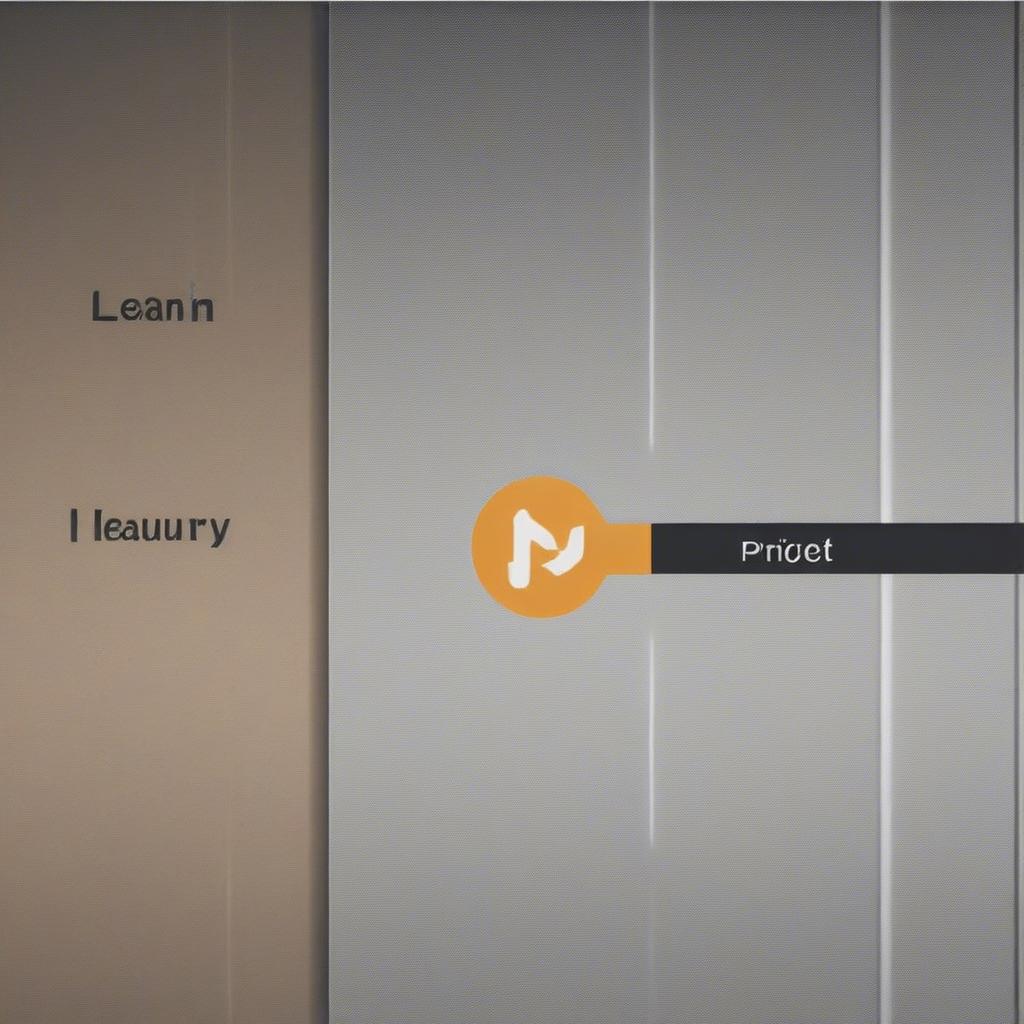
Choosing the right pricing model is one of the most critical decisions a freelancer can make. It directly impacts your income, your workload, and even your client relationships. The age-old debate of hourly vs project pricing isn’t just about numbers; it’s about understanding your worth, your client’s needs, and ultimately, building a sustainable and thriving freelance business. So, let’s dive deep into this crucial aspect of freelance rates and help you navigate this decision with confidence.
Understanding Hourly Pricing: Time is Money
What is Hourly Pricing?
Hourly pricing, as the name suggests, is a straightforward pricing model where you charge clients for every hour you spend working on their project. This approach breaks down your services into measurable chunks of time, making it easy for both you and your client to track the work done.
The Benefits of Hourly Pricing:
- Simplicity and Transparency: It’s easy to explain to clients and understand, fostering trust from the start. Clients see exactly what they’re paying for, which can alleviate concerns about hidden costs.
- Flexibility and Adaptability: If the project scope changes mid-way (and they often do!), adjusting the billing is seamless. You’re compensated for the extra time spent, protecting your financial interests.
- Ideal for Unpredictable Tasks: When you’re working on something with many unknowns, such as debugging code, ongoing technical support, or content writing where you are not certain about the level of research involved, hourly rates provide a safety net, ensuring fair compensation for all the time you invest.
- Suitable for Beginners: If you’re new to freelancing, setting an hourly rate might be easier since you’re likely more comfortable tracking time than estimating project scope.
- Avoids Scope Creep: Since you bill for each hour worked, clients tend to be more mindful of their requests, helping to prevent endless rounds of revisions and unplanned expansions.
The Downsides of Hourly Pricing:
- Incentivizes Slow Work: Let’s be honest, charging by the hour could (unintentionally) reward spending more time on tasks rather than efficiency. It might hinder you from becoming more productive since there is no financial incentive to become faster.
- Client May Focus on Time Spent, Not Value: Clients may worry more about the hours you’re clocking rather than the results they’re getting. This can lead to unnecessary scrutiny of your time management.
- Caps Your Earning Potential: Your earnings are limited by the hours you have available to work, unless you increase your freelance rates. It’s a less scalable model.
- Requires Detailed Time Tracking: Accurately tracking every minute can be a hassle and take time away from the actual work. Without meticulous tracking, you might underbill yourself.
- Difficult to Predict Income: When starting a new project, it’s hard to know exactly how much time it will take, making income projections more challenging.
Understanding Project-Based Pricing: Delivering Value
What is Project-Based Pricing?
Project-based pricing, also known as fixed-fee pricing, is where you agree on a set fee for the completion of a project, regardless of the time spent. You define clear deliverables and a price before starting the project.
The Benefits of Project-Based Pricing:
- Incentivizes Efficiency: This model encourages you to work smarter and faster because you get the agreed-upon price no matter how long it takes. This creates a financial motivation to streamline your processes.
- Predictable Income: Knowing how much you’ll earn from a project makes budgeting and financial planning much easier. This predictability can reduce financial stress.
- Focuses on Results, Not Time: Clients care more about the value you’re delivering rather than how many hours you clock. This shifts the focus to the outcome of your work and promotes better client relationships.
- Greater Earning Potential: If you can complete a project faster than estimated, you’re effectively earning more per hour than if you used an hourly rate. This can lead to increased profitability.
- Scalability: Once you have a repeatable process, it’s easier to take on multiple projects without worrying about the hours in a day. This supports business growth.
- Attracts Serious Clients: Clients who prioritize results over time often prefer the certainty of a fixed project cost. This can be an indicator of more committed and potentially higher-paying clients.
The Downsides of Project-Based Pricing:
- Requires Accurate Estimates: You must be skilled at estimating the scope of a project and how long it will take. Poor estimates can lead to underpaying yourself and reducing your profits.
- Risk of Scope Creep: If the project’s requirements change dramatically, you might have to renegotiate the fee. Without clear boundaries, scope creep can erode your profits significantly.
- Challenging for Unpredictable Projects: If you cannot accurately define the project scope in advance, project pricing can be risky. If unforeseen challenges arise, you could end up spending much more time than anticipated without additional compensation.
- Potentially Off-putting to Some Clients: Some clients prefer to see an hourly breakdown, particularly those concerned about overpaying for the time they perceive the project should take.
- Higher Pressure: You must be efficient and good at project management to meet deadlines and deliverables without sacrificing quality. This can be stressful for some freelancers.
A Deep Dive: The Hows and Whys of Choosing the Right Model
Now that we understand both models, how do you choose between them? Here’s a breakdown based on several factors:
1. Your Level of Experience:
- Beginners: If you’re starting out, hourly rates might feel safer. It allows you to understand your workflow and track how long tasks really take. It’s an excellent tool to understand where your time goes.
- Experienced Freelancers: As you become more skilled, you can predict your time better, making project-based rates more viable and financially rewarding.
2. Project Complexity:
- Simple, Defined Projects: For projects with clear parameters and predictable tasks (like writing a single blog post on a topic you know well or designing a single-page website), project-based pricing can be more efficient.
- Complex, Variable Projects: For projects with lots of moving parts, unclear specifications, or those that often evolve (like long-term content strategy development or extensive software coding), hourly rates offer greater flexibility and protection.
3. Client Type and Preferences:
- Clients Prioritizing Cost Control: Some clients prefer the transparency of hourly rates to monitor their expenses directly.
- Clients Prioritizing Results: If a client is most concerned with the final outcome and wants a fixed budget, project-based pricing is often their preferred method.
- Long-Term vs. Short-Term Clients: For long-term engagements or retainer agreements, a mix of pricing models may be best.
4. Personal Preferences and Workflow:
- Time-Conscious Freelancers: If you’re good at managing your time and prefer the predictability of knowing exactly what you’ll be paid for a project, project-based pricing might be better.
- Flexible Workers: If you prefer a more adaptable approach and like getting paid for all the time you put in, even if a project takes longer than anticipated, then hourly rates might be more suitable.
5. Your Niche and Industry Standards:
- Industry Norms: Some industries lean more heavily towards project-based pricing (e.g., graphic design), while others prefer hourly rates (e.g., consulting). Research the usual pricing models in your niche to see what competitors are charging.
- Market Demand: Factor in the current demand for your services. If you have highly sought-after skills, you may be able to command premium rates, whether hourly or project-based.
Strategies to Determine Your Freelance Rates:
Whether you choose hourly or project-based, you’ll need to determine your rate. Here are some strategies:
1. Calculate Your Basic Expenses:
- Track Your Costs: Calculate your living expenses, business expenses, taxes, and savings goals.
- Determine Your Target Income: Decide what you need to earn to sustain your lifestyle, reinvest in your business, and build financial security.
2. Research the Market:
- Competitor Research: Explore what other freelancers in your niche charge, especially in your location. Don’t simply undercut your competitors; aim to offer good value at fair prices.
- Online Resources: Use websites like Glassdoor, Payscale, and other freelance platforms to get a sense of average rates.
3. Factor in Your Experience:
- Entry-Level: Start with a rate that’s aligned with your basic skills and consider adjusting it as you gain experience.
- Intermediate: As you gain more experience, you can increase your rates, reflecting your expertise and efficiency.
- Expert Level: If you have a specialized skill set or years of experience, you can command premium freelance rates.
4. Factor in the Project:
- Complexity: More complex or specialized projects should command higher rates.
- Timeline: Urgent projects should have higher rates, especially if they require you to work overtime.
- Client Budget: Sometimes, you need to adapt your rate within the range of a client’s budget.
5. Test and Adjust:
- Experiment: Try different rates to see what works best for you. Keep track of the projects and rate that worked best for you.
- Seek Feedback: Ask clients for feedback about your freelance rates and services.
- Regular Review: Regularly evaluate your rates to make sure they keep up with your growth, value, and the market.
Moving Beyond the Choice: Mastering the Art of Pricing
Choosing between hourly and project pricing is a starting point. There are nuances to implementing each model:
Negotiating Hourly Rates:
- Be Clear About Your Rate: State your hourly rate upfront and be prepared to explain how you determined it.
- Track Time Accurately: Use tools like Toggl Track, Clockify, or Harvest to record your hours accurately.
- Be Transparent With Clients: Provide regular updates on your time spent.
- Consider Time Blocks: When possible, break down your work into time blocks with clear objectives, allowing clients to know what they are paying for.
Negotiating Project Rates:
- Understand the Scope: Get all the project details upfront to ensure you’re providing a complete quote. It is important to clarify every single detail with the client.
- Itemized Quotations: Provide a detailed breakdown of your quote, explaining the scope of work and deliverables.
- Include Buffer Time: Add a buffer of extra time to your estimate to account for any unexpected delays or challenges.
- Clear Contract: Always have a contract outlining the project’s scope, deliverables, timelines, and terms of payment.
- Payment Milestones: Break larger projects into milestones with specific deliverables and payments tied to each stage. This ensures payment along the project cycle.
Combining Pricing Models:
Sometimes, a combination of pricing models works best. For example, you might use hourly rates for initial consultations and then switch to project-based rates for the main body of the project. You might also use hourly rates for revisions or unexpected tasks.
Learn Business: Supporting Your Freelance Journey
Pricing your services is a crucial element to the success of your freelance business. Learn Business understands these intricacies and provides a wide array of guidance, templates, and tools to support your financial decisions. Learn Business helps you navigate the complex world of freelancing so you can establish a strong foundation for business growth and profitability.
Here’s how Learn Business can support you:
- Customizable Pricing Templates: Access easy-to-use, adaptable templates to formulate quotes and invoices, ensuring accurate and professional billing, whether you prefer hourly or project-based pricing.
- Comprehensive Guides: Gain a deep understanding of different pricing models, including the nuances of hourly and project-based pricing. Learn how to evaluate your worth, manage projects, and ensure that your pricing is both competitive and profitable.
- Contract Templates: Get access to legally vetted contract templates that are tailored to the freelance industry. These contracts help protect your business and ensure clarity with every client engagement.
- Financial Planning Tools: Access resources to manage your finances, track income and expenses, set savings targets, and plan for taxes effectively.
- Workshops and Courses: Participate in online workshops and courses designed to help freelancers like you enhance your business knowledge and skills, enabling you to build a thriving business.
- Community Support: Join a network of like-minded freelancers, share experiences, learn from each other, and grow your business.
By leveraging the support from Learn Business, you’re not just choosing between hourly and project-based pricing—you’re building a sustainable, profitable freelance business with all the necessary resources.
Conclusion: The Key is Understanding and Adaptability
Ultimately, there’s no one-size-fits-all solution to the hourly vs project debate. The best pricing model depends on your experience, the project’s nature, client preferences, and your personal work style. The crucial thing is to be knowledgeable about both pricing models, understand their advantages and disadvantages, and adapt your strategy as your freelance career progresses. With the correct strategies, pricing tools, templates from Learn Business, and a well-planned approach, you can confidently set your freelance rates and build a successful freelance business.
Remember that choosing between hourly vs project pricing is just one piece of the freelance puzzle. By focusing on providing high-value work, building strong relationships with your clients, and always continuing to learn and refine your processes, you can establish yourself as a respected and sought-after freelancer in your chosen field.



Leave a Reply